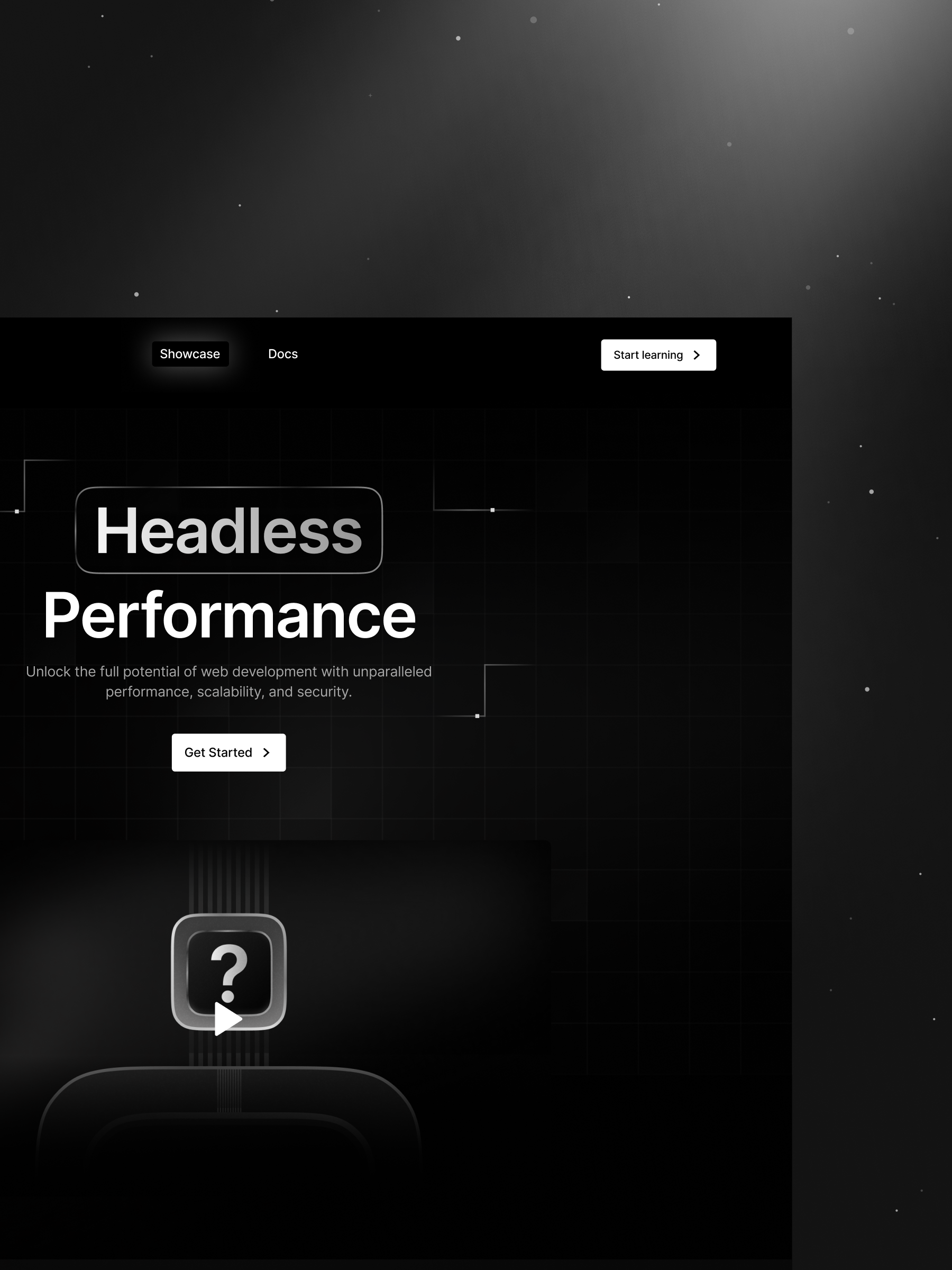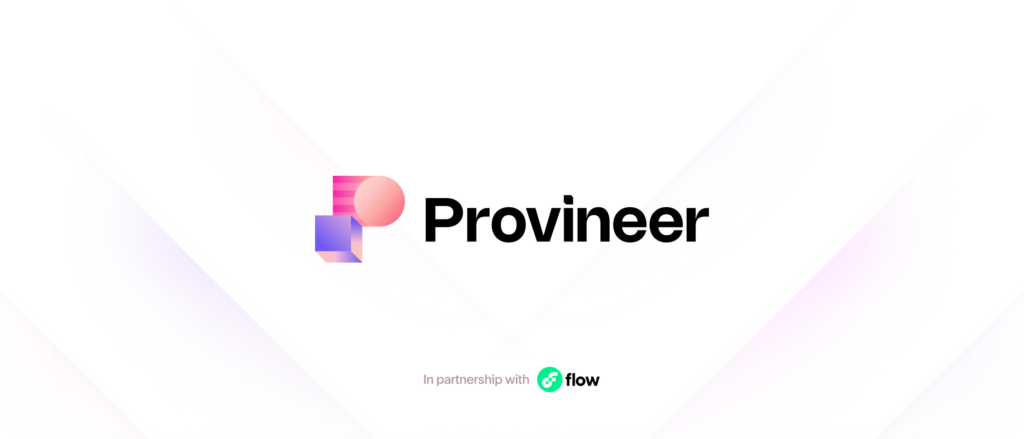
Provineer: The Future of Intellectual Property Protection
Provineer is an exciting new project we’ve been building in the Drewl Labs and is scheduled to release later this year. We developed Provineer in partnership with FLOW blockchain as a way to provide affordable, accessible, and secure intellectual property (IP) protection using web3 technology.
The name “Provineer” comes from the word “provenance”, which, in the art world, refers to a record of ownership of an artwork to trace its authenticity. Originally, we wanted to call it “Provenanced” but since that’s an actual word, you can’t copyright it.
So instead, we came up with Provineer, an amalgamation of “provenance” and “pioneer” which quite nicely summarises what we’re trying to do.
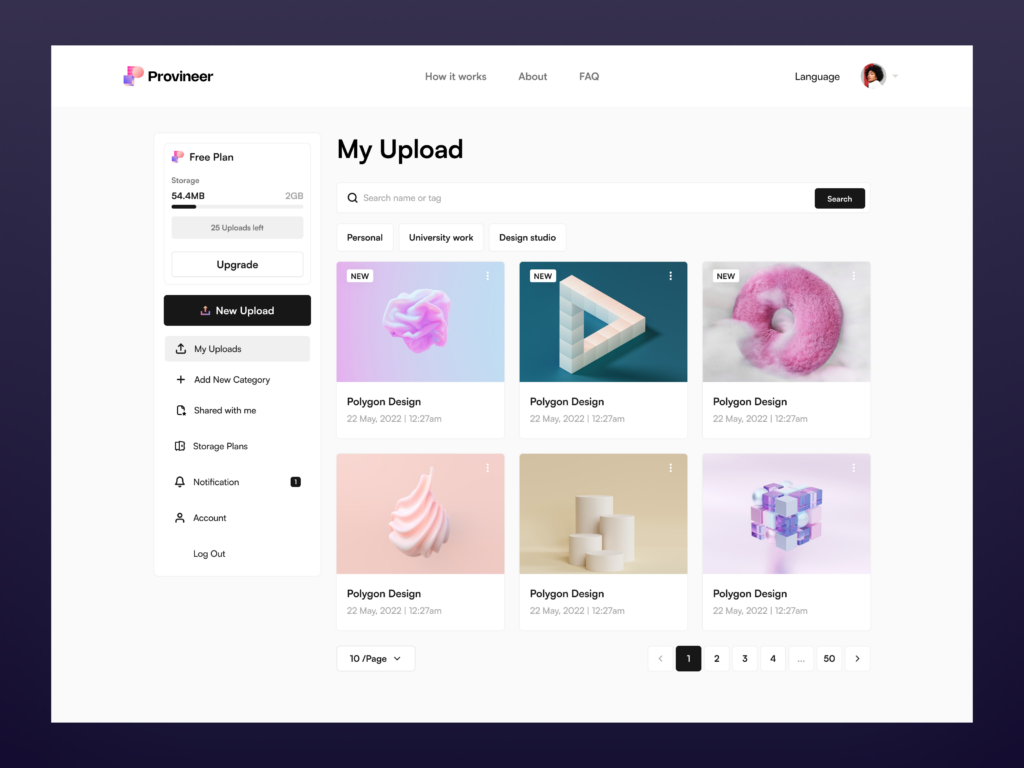
Why IP protection matters
The internet has created a decentralised environment for content creators and consumers. Anyone can upload their creative work to a free platform and have the potential to reach millions of people with it.
There are over 200 million content creators making money online by sharing their work on platforms like YouTube, Twitch, TikTok, and Instagram.
For an increasing number of people, publishing content online is crucial to their careers: whether they’re full-time or part-time content creators, freelancers, or small businesses.
And while it’s great that so many people can distribute their creative works, the internet also makes it harder to protect your intellectual property. People find their personal photographs and artwork appearing in pop-up ads and random social media pages. Automated scraping bots can download an entire site’s worth of content in seconds and repurpose it.
Stealing someone else’s creation from the internet is as simple as clicking copy and paste. It would take you less than 2 seconds to steal this entire post (but you wouldn’t do that, I trust you).
Some platforms have made it harder to just copy and paste content. But quick Google searches for terms like “download videos from Instagram” show how easy it is to get around these restrictions. Essentially, if your content is online, someone can take it.
User research
The process of taking action against digital plagiarism is often prohibitive. There is currently no easy and accessible way for creators to protect their intellectual property rights. The only option is to make a copyright claim: a lengthy and expensive process with no guaranteed results.

And content creators aren’t corporations. Many of them don’t have the time and money to protect their work. According to a report by Linktree: 46% of full-time creators and 68% of part-time creators make less than $1,000 a year from their work.
As part of the research for Provineer we surveyed 100 creatives. Out of these, 96% were concerned about authenticating their work online but only 7% were taking action to prove ownership.
Developing Provineer
The concept of Provineer was created in collaboration with Adam Andrascik. It began as a notion to address this problem of IP protection through web3 technologies: using blockchain authentication to provide incontrovertible proof of ownership.
Provineer has two main goals:
- Provide immutable verification of ownership
- Make authentication more accessible
Accessibility
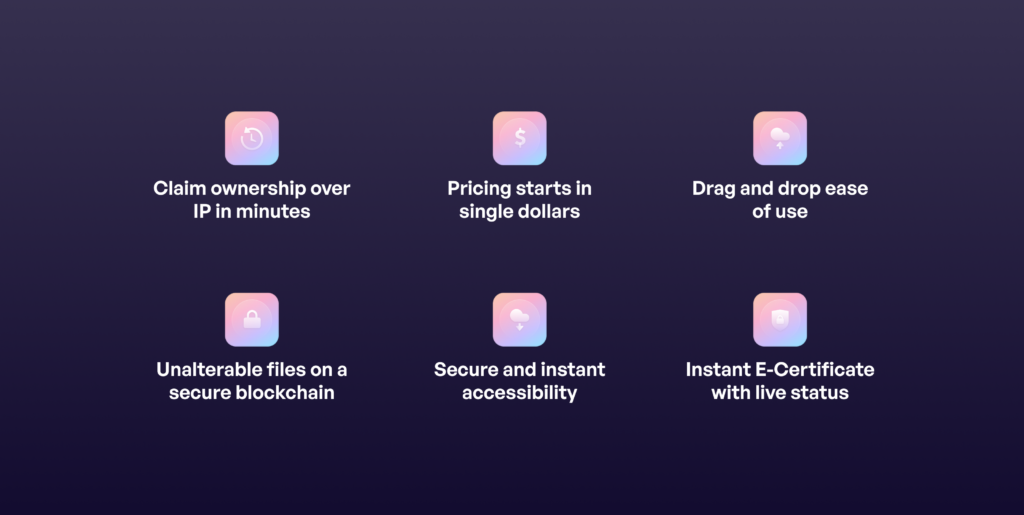
The thing about blockchain and decentralised storage, of course, is that it’s quite a dense topic and awkward to get your head around, let alone put into practice.
Accessing the blockchain involves installing and using a private wallet and storing the public and private keys for that wallet. And, while some people would be fine with that, we needed our platform to be something that literally anyone could use.
The goal with Provineer was to simplify the authentication process into something more accessible, to take a web2 approach to web3 technology – a web 2.5 if you will.
After all, there’s no point in developing a ground-breaking platform if it’s too convoluted for people to use.
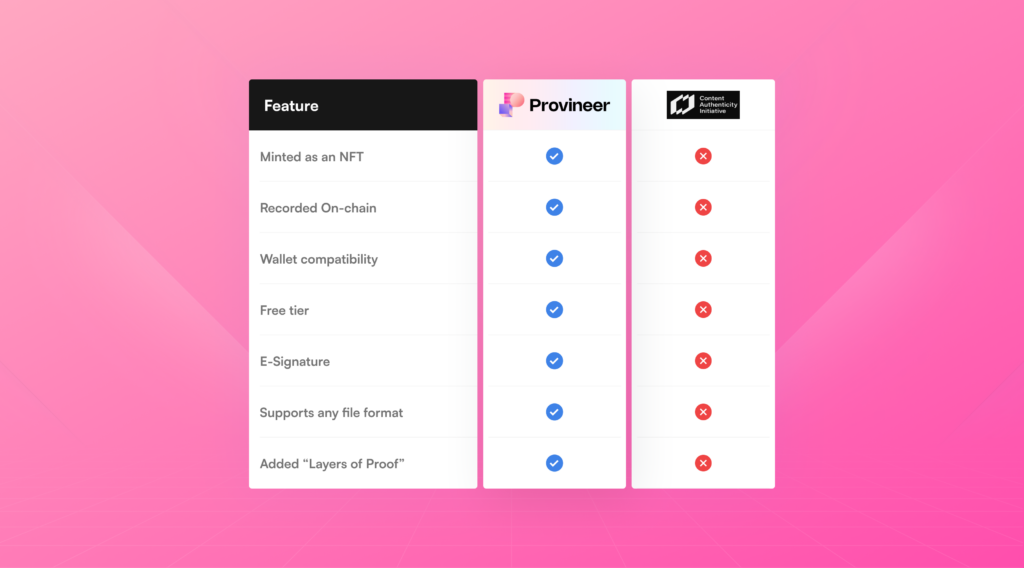
To this end, we implemented a simple drag and drop interface where users can upload documents and mint them on the blockchain in a few seconds without the need to have a wallet. All of the web3 functionality is wrapped in a simple, fast, and responsive UI built in react and node.js.
Provineer provides a unique custodial wallet for each customer. Using the FLOW wallet API, we integrated the wallets into our platform so that we hold the public and private keys for any blockchain tokens minted.
Additionally, we’re pricing Provineer in a way that isn’t prohibitive for creators. For a few dollars a month, you’ll be able to authenticate all of your work without any hassle, legal complexities, or uncertainty. We’ll also be launching a free initial version of Provineer so you can “try before you buy”.
With its simple, intuitive user flow, and low cost, we believe that Provineer will remove the barriers of entry for creators to take ownership of their work.
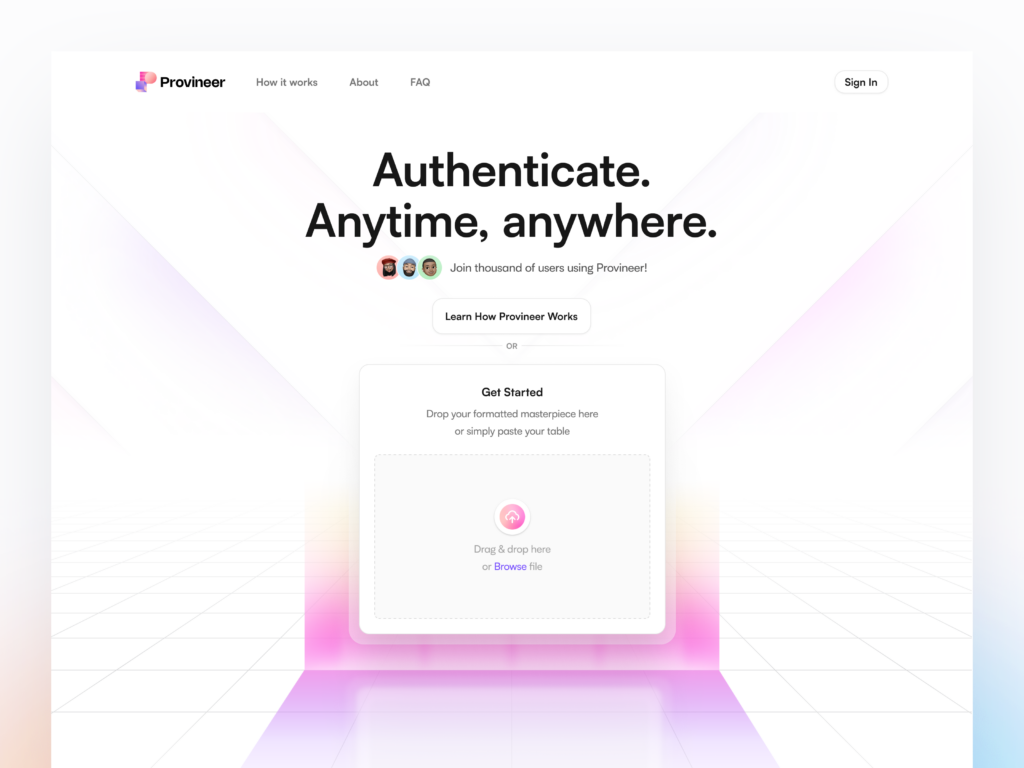
Immutable authentication
How it works:
Provineer uses a “layers of protection” model, stacking multiple methods of authentication to provide incontrovertible evidence of ownership.
The layers:
- Supporting evidence or ‘proof’
- Metadata
- e-signature
- Entry into the blockchain ledger
- IPFS storage
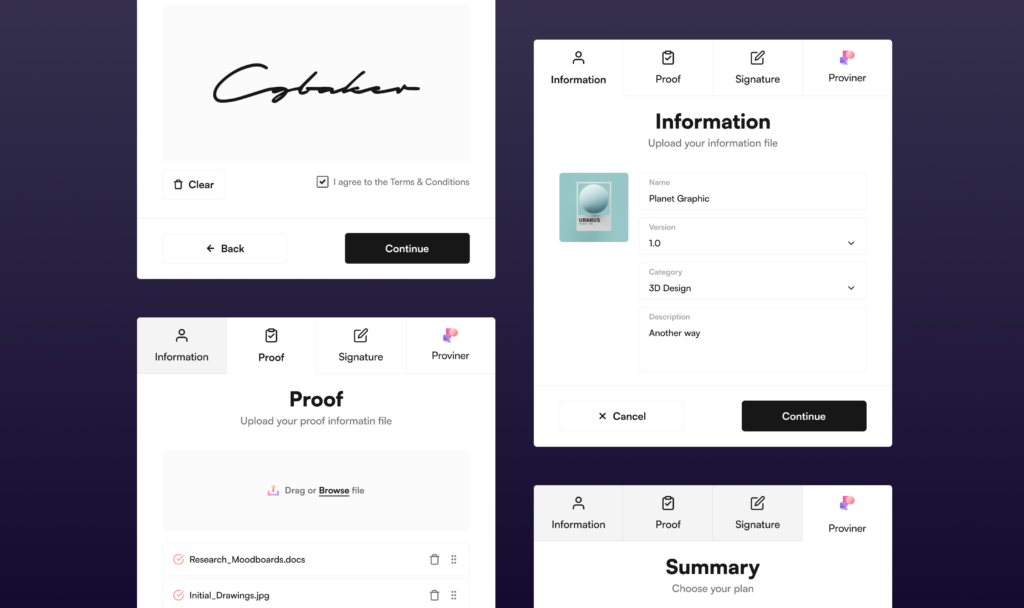
To verify a work with Provineer, the user uploads the work itself as well as supporting evidence (first drafts, research, etc.). These documents, along with their metadata, are then minted on the blockchain. This creates a permanent, unchangeable record of the origin (or provenance) of these documents.
Additionally, when a document is uploaded to Provineer, the user is essentially triggering a smart contract transaction. This contract is verified on the FLOW blockchain nov and forever. Once these documents are verified on FLOW they cannot be edited by anyone. Not even us.
How does blockchain authentication work?
A blockchain is made up of pieces of data known as “blocks”. Each block contains a unique “hash code” that works like a fingerprint to identify that block. The blocks also contain the hash codes of the block that precedes them, essentially functioning like the links in a chain.
One of the best security features of blockchain technology is that it’s decentralised, meaning that the data is stored across a network of computers (or nodes) rather than in one place. For data to be added to the blockchain it must be verified by the network. This is often done by nodes performing complex calculations. Each node also carries a record (or “ledger”) of the data on the chain.
Because the blockchain is distributed over a network and the blocks are linked to each other, it’s virtually impossible for someone to tamper with the data.

IPFS storage
The blockchain token serves as an immutable record of the provenance of the document. But it doesn’t hold the file itself. The documents are all stored on the IPFS network.
IPFS is a decentralised storage network. When a file is uploaded, 3 copies are made and each is split into tiny (256KB) chunks that are distributed across a network of computers. Meaning that there is no centralised point of attack and if a particular computer (or node) were taken down it wouldn’t affect the file.
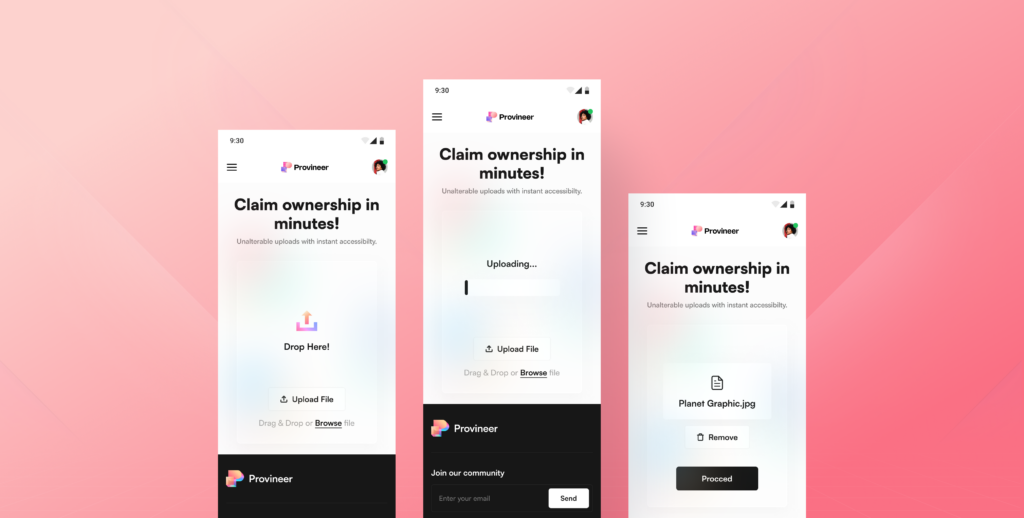
Get in on the action!
If all of this sounds appealing to you, then visit the Provineer website, register your email, and you’ll be updated as soon as the beta is released!
Want to transform your digital experience?
Book in a discovery call...

